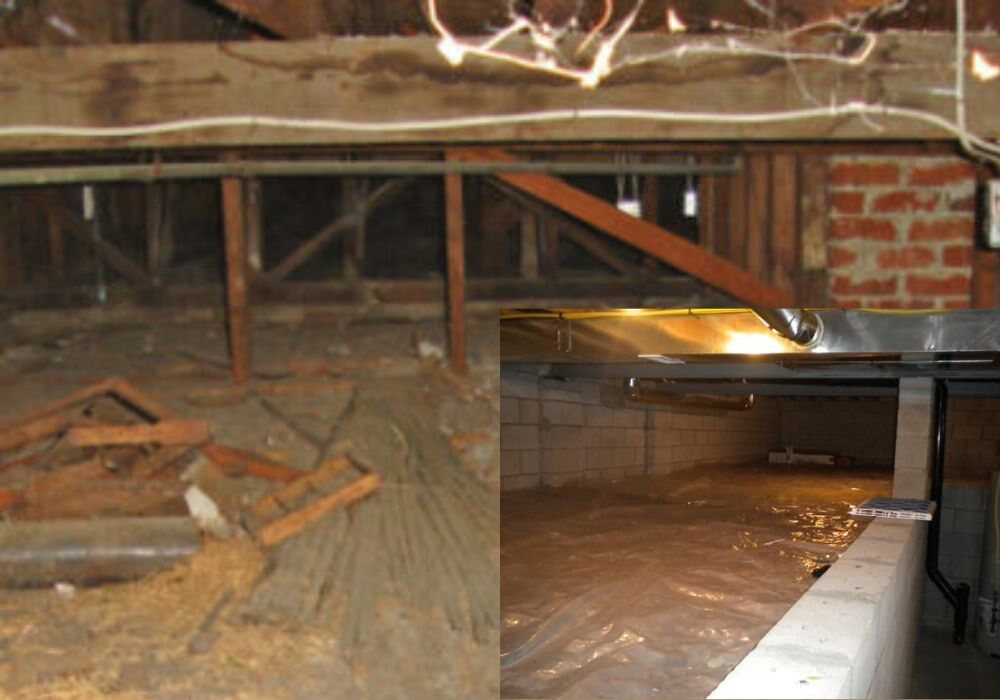Unexcavated crawl spaces are a common feature in many homes, yet their implications are often overlooked. These spaces, typically found beneath the main structure of a house, are left unexcavated during construction for a variety of reasons. Understanding the potential issues and benefits associated with these spaces is crucial for homeowners and real estate professionals alike. This guide aims to provide a comprehensive overview of unexcavated crawl spaces, their characteristics, implications, and maintenance tips.
The Basics of Crawl Spaces

What is a Crawl Space?
A crawl space is a type of foundation that elevates a home above the ground. Unlike a basement, a crawl space is not intended for living or storage due to its limited height.
Types of Crawl Spaces
Crawl spaces can be broadly categorized into two types: ventilated and unventilated, and excavated and unexcavated. Ventilated crawl spaces allow air to circulate, while unventilated ones do not. Excavated crawl spaces are dug out and typically have a concrete floor, while unexcavated ones are left in their natural state.
Common Uses of Crawl Spaces
Despite their limitations, crawl spaces serve several important functions. They provide access to plumbing, electrical wiring, and HVAC systems, and in some cases, they may be used for storage.
Understanding Unexcavated Crawl Spaces
Definition and Characteristics
An unexcavated crawl space is a crawl space that has been left in its natural state during construction. These spaces are typically characterized by a dirt or gravel floor.
Common Reasons for Unexcavation
Unexcavation is often chosen due to cost considerations, soil conditions, and local building codes. Excavating a crawl space can be expensive and time-consuming, and in some cases, the soil conditions may not be suitable for excavation.
Typical Dimensions and Features
Unexcavated crawl spaces typically have a height of 1 to 3 feet. Access points may be located on the exterior or interior of the home, and ventilation may be provided through vents or gaps in the construction.
Implications of Having an Unexcavated Crawl Space

Structural Integrity Risks
One of the main concerns with unexcavated crawl spaces is the potential for structural integrity issues. The lack of a solid foundation can lead to instability and potential damage to the home.
Moisture and Mold Concerns
Unexcavated crawl spaces are prone to moisture accumulation, which can lead to mold growth. This not only damages the home but can also lead to health issues for the inhabitants.
Pest Infestation Risks
The damp, dark conditions of an unexcavated crawl space can attract pests, leading to infestations that can be difficult to control.
Health Implications
Air Quality Issues
The moisture and mold in an unexcavated crawl space can significantly affect the home’s air quality. This can lead to respiratory issues and other health problems for the inhabitants.
Allergens and Health Risks
In addition to mold, unexcavated crawl spaces can also harbor allergens like dust mites and rodent droppings, further exacerbating health risks.
Financial Considerations
Cost of Remediation
Addressing the issues associated with an unexcavated crawl space can be costly. This includes the cost of mold remediation, pest control, and potential structural repairs.
Impact on Property Value
An unexcavated crawl space can negatively impact a home’s appraisal value and make it less appealing to potential buyers.
Solutions and Alternatives
When to Consider Excavation
If the issues associated with an unexcavated crawl space are severe and ongoing, it may be worth considering excavation. This is a significant undertaking and should be done by professionals.
Alternative Solutions
For less severe issues, alternative solutions like installing a moisture barrier or improving ventilation can be effective.
Maintenance Tips for Unexcavated Crawl Spaces
Regular Inspections
Regular inspections are crucial for maintaining an unexcavated crawl space. This can help identify issues early before they become major problems.
Preventative Measures
In addition to regular inspections, preventative measures like sealing gaps, improving ventilation, and controlling pests can help maintain the integrity of an unexcavated crawl space.
Conclusion
Unexcavated crawl spaces, while common, can pose significant challenges for homeowners. Understanding these challenges and how to address them is crucial for maintaining a safe and healthy home. Whether you’re a homeowner or a real estate professional, it’s important to be aware of the implications of an unexcavated crawl space and take action if necessary.
FAQ Section
- What are the signs of a problem in a crawl space?
- Signs of a problem in a crawl space can include visible mold growth, a musty smell, pest infestations, and structural issues like sagging floors.
- Can I convert my unexcavated crawl space into a usable area?
- Converting an unexcavated crawl space into a usable area is a significant undertaking and may not be feasible or legal in all cases. It’s best to consult with a professional.
- How often should I inspect my crawl space?
- It’s recommended to inspect your crawl space at least once a year. However, if you’ve had issues in the past, more frequent inspections may be necessary.


